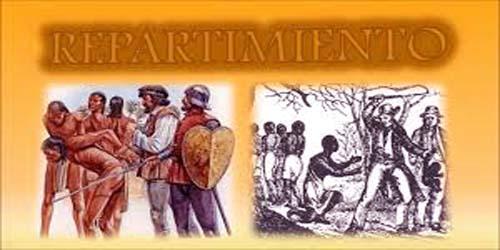Repartimiento is the colonial forced labor system imposed on the aborigines of Spanish America and the Philippines. In the Andes, the system was also known as Mita, in the mining region the Inca word Mita and a Spanish adaptation of labor service known as Mita de Minas. In Peru, the reorganized system, often known as the Mita and New Spain (Mexico) Guayaquil (Spanish: Nahuatl quatquital or cohuacitital corruption), was effective in early 1499 and was given a definite form around 1575. About 5 percent may be more than 10 percent for labor and seasonal farming in the mines among the aborigines of a given district. In Spanish, repartimiento means “partition” or “division”. ” Initially, the repartimiento system was a law that allowed Spanish colonialists to use a portion of the local population as forced labor. A colonist who wants to be rehabilitated must apply to the Viceroy or Audience (Provincial Court of Appeal), noting that the supplementary labor required for his planting or walking or mining will provide the country with the necessary food and goods. However, it created conditions similar to slavery in certain regions, most notably in the silver mines of sixteenth-century Peru. In the first decade of Caribbean colonization, the term was used for an organization that became an encompassing, which can be confusing.
In order to qualify for reconstruction to work on the land, the Spanish colonists had to justify that additional labor was needed to provide the food or commodities needed to survive in the colonies. For the most part, Repertimento replaced Encomanda throughout the New Spanish Viceroyalty in the early seventeenth century. Enkomindas survived long in Peru, and the word cochua Mita was often used for restoration. For example, in some communities widows were required to serve at this age and the individual or the community as a whole could be exempted or claimed on the basis of a special service that they or their ancestors performed for the state. According to the theory, individual males serve two to four months of repetitive labor and are then exempted for one year. For example, widows in some communities were required to serve at this age, and individuals or the community as a whole could be exempted or claimed on the basis of the special services they or their ancestors performed for the state. These requirements, however, were practically ignored, and, because forced workers were often treated ruthlessly, the Spanish government changed the system in 1601 and 1609. Native communities close to the Spanish population need to be provided with a percentage (2-4%) of them to work on farms, homes, roads, etc. The move led to the replacement of the Enquanda system and the creation of privately owned farms and hakindas. The new system was legally effective until the end of the colonial period (c. 1820). In practice, however, the influence of the aborigines under the previous system continued for 17 years and in the 18th century, despite additional royal prohibitions. Some wanted wages; Others signed contracts (oriental) for six months to a year, during which time workers were paid (Spanish crowns that did not apply or help anything), and provided religious services in addition to living. In many cases, it was observed that both wage and resettlement workers worked side by side on farms, mines, Obras, or hakindas.
















